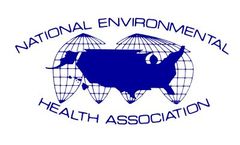Concentrated Animal Feed Operations Articles & Analysis
6 articles found
Concentrated (or confined) animal feed operations (CAFOs) are the principal means of livestock production in the United States, and such facilities pollute nearby waterways because of their waste management practices; CAFO waste is pumped from the confinement structure into a cesspit and sprayed on a field. ...
Trenbolone is an androgen agonist used in cattle production and has been measured in aquatic systems associated with concentrated animal‐feeding operations. In this study, the authors characterized the effects of aqueous exposure to 17β‐trenbolone during larval Xenopus tropicalis development. Trenbolone exposure resulted in ...
Judicial challenges have forced the US Environmental Protection Agency (EPA) to adopt additional controls governing concentrated animal feeding operations (CAFOs). State agencies have also been directed to do more to minimize the risk of pollution from animal production. In developing appropriate controls, ...
The objective of this study was to evaluate a dairy located in the arid southwest United States to determine the concentrations and seasonal variation of airborne fungi and bacteria and to determine the percentage of antibiotic resistant Staphylococcus aureus. The authors used two-stage ambient air sampling systems to measure the culturable airborne fungal organisms and bacteria on a monthly ...
The use of urea fertilizers in grasslands is likely to increase in areas with concentrated animal feeding operations as restrictions on manure applications are implemented. ...
Nutrient management plans (NMPs) for application of wastewater from concentrated animal feeding operations are designed to meet crop water and nutrient requirements, but implicitly assume that pathogenic microorganisms in the wastewater will be retained and die-off in the root zone. ...




